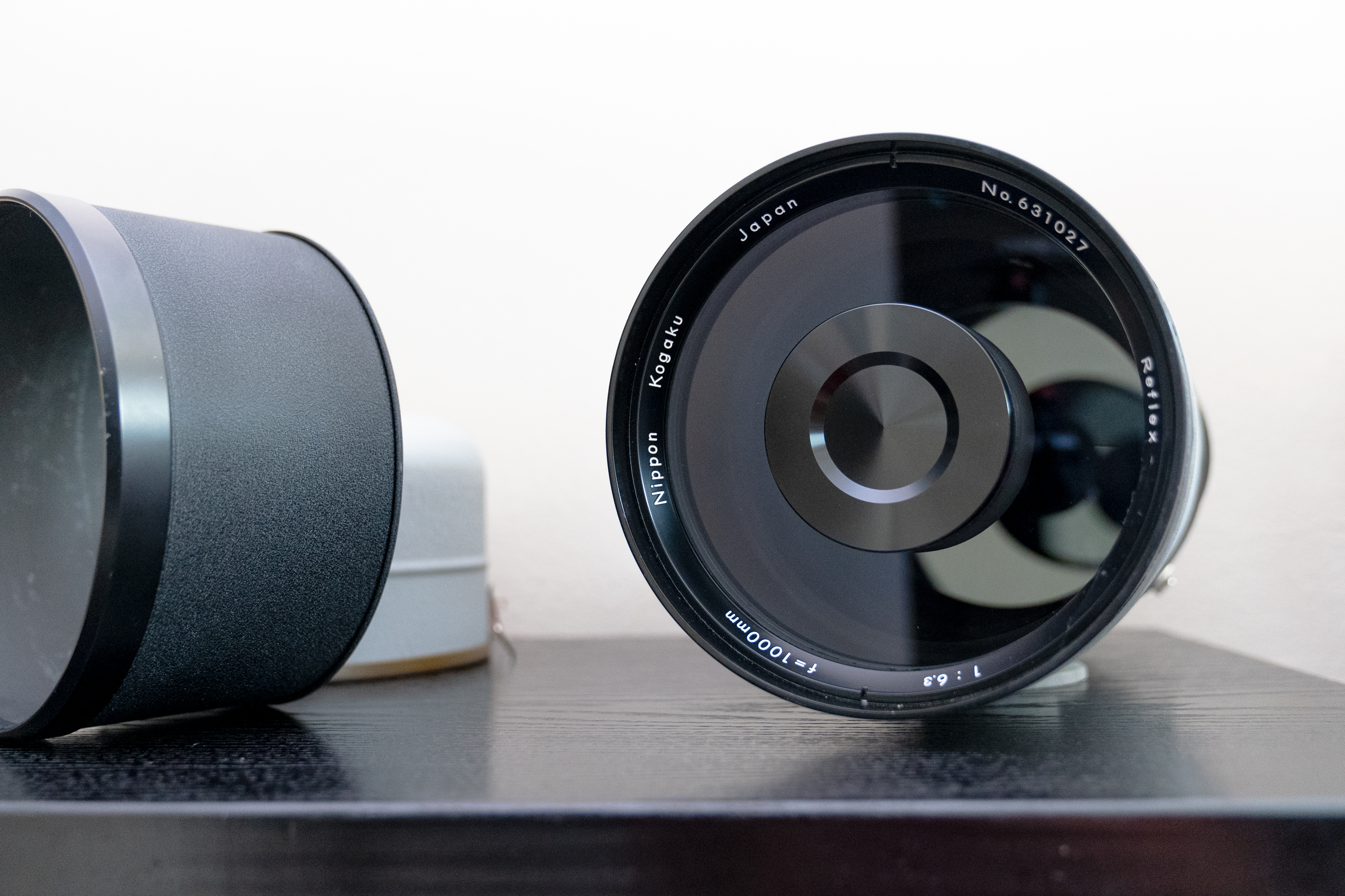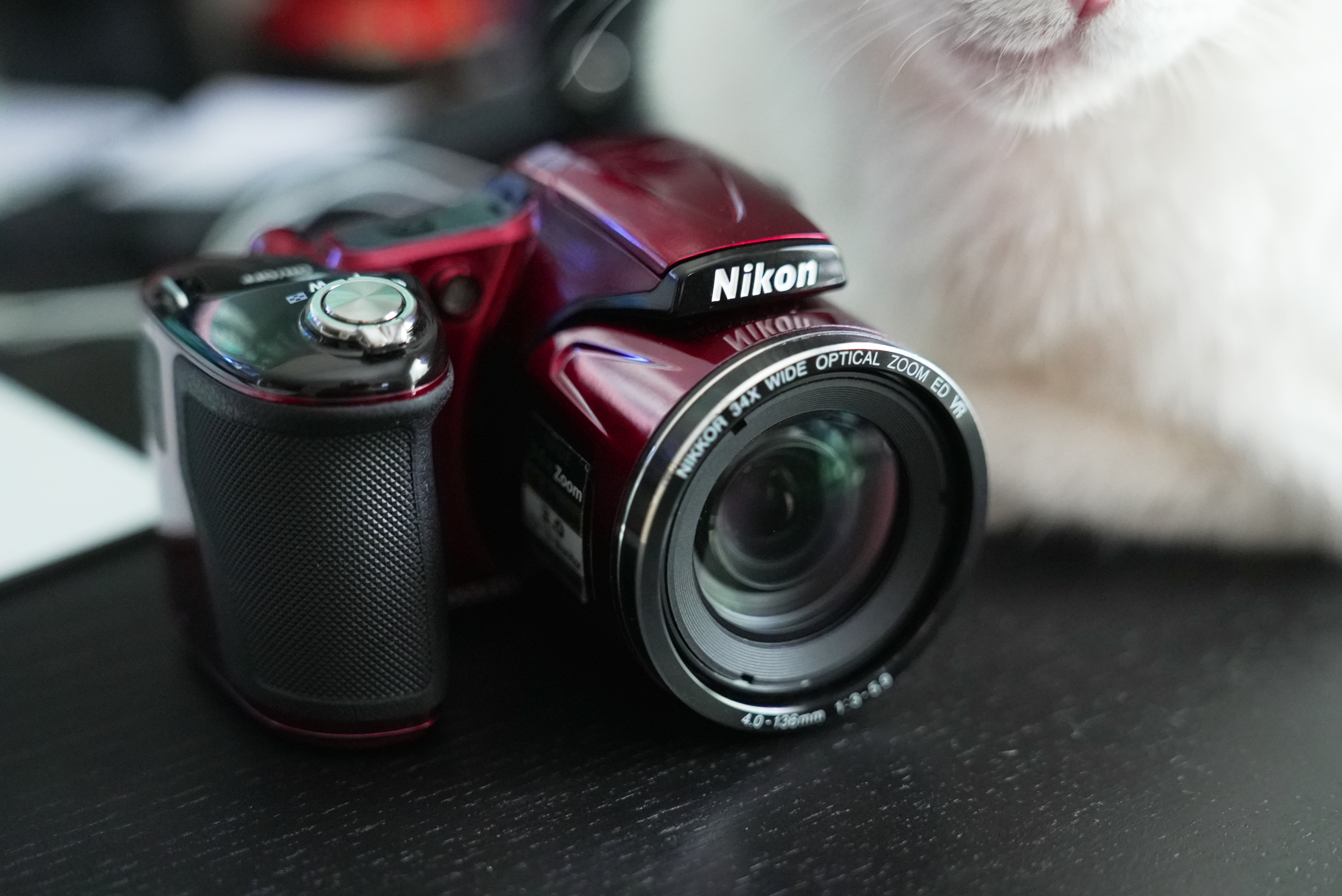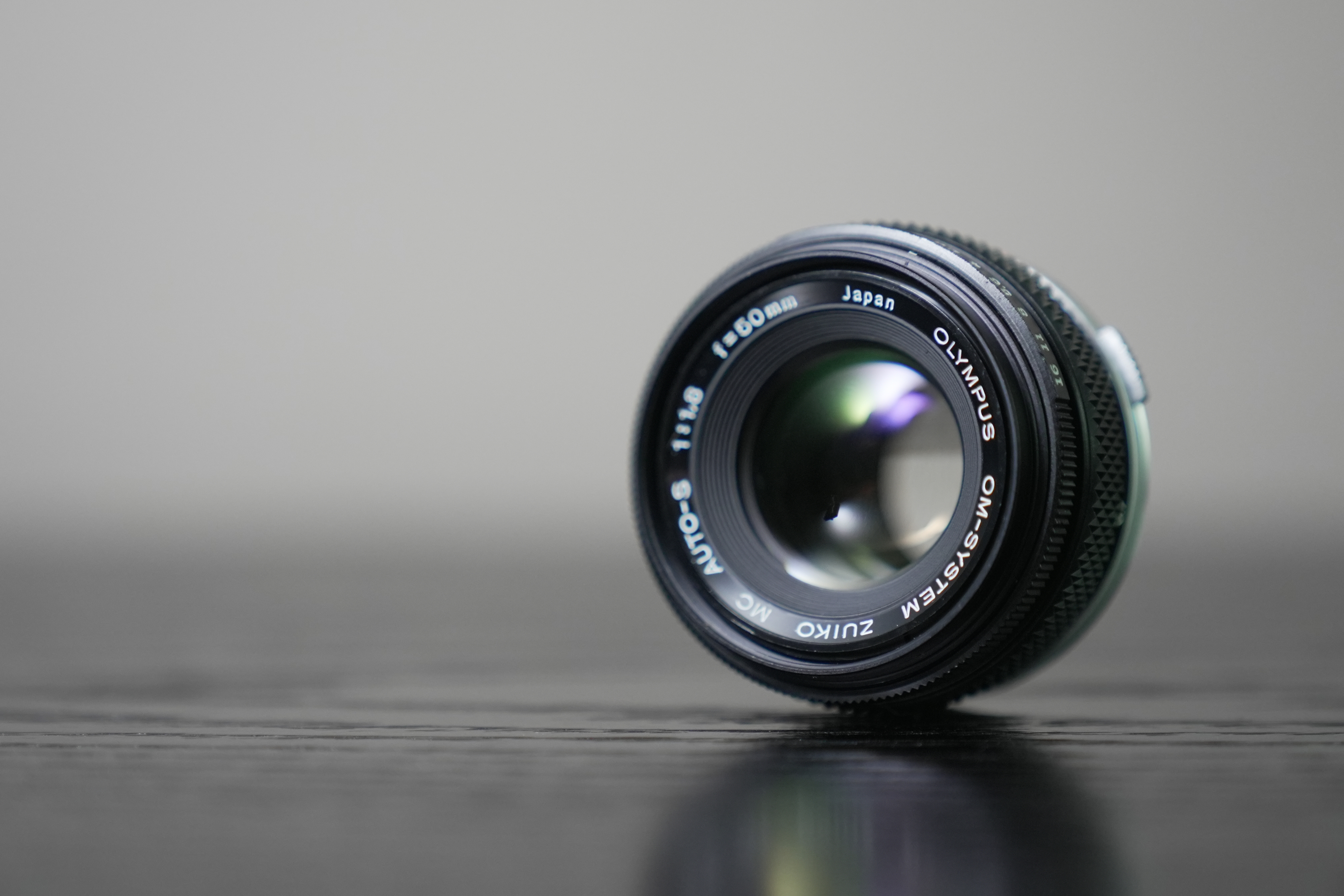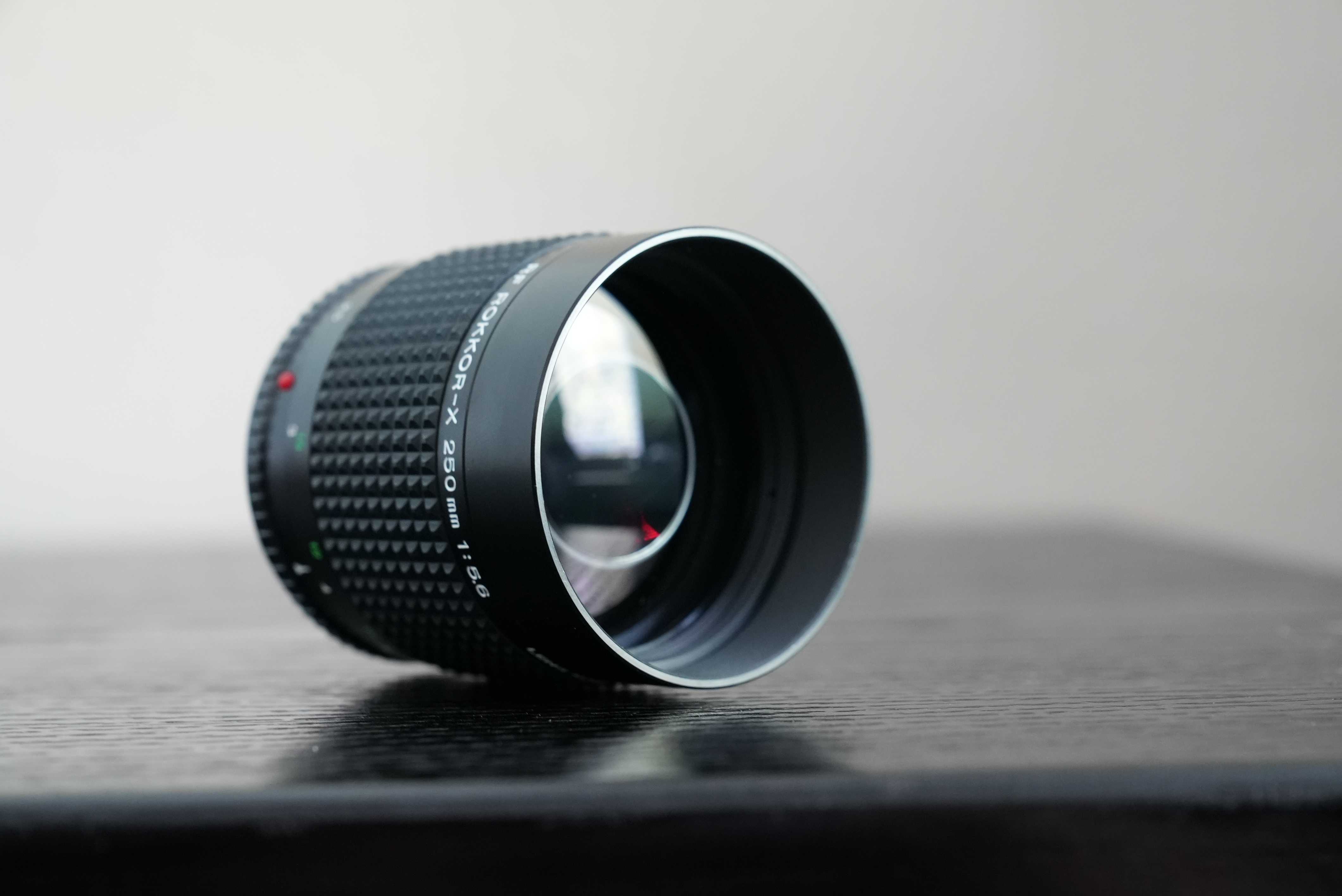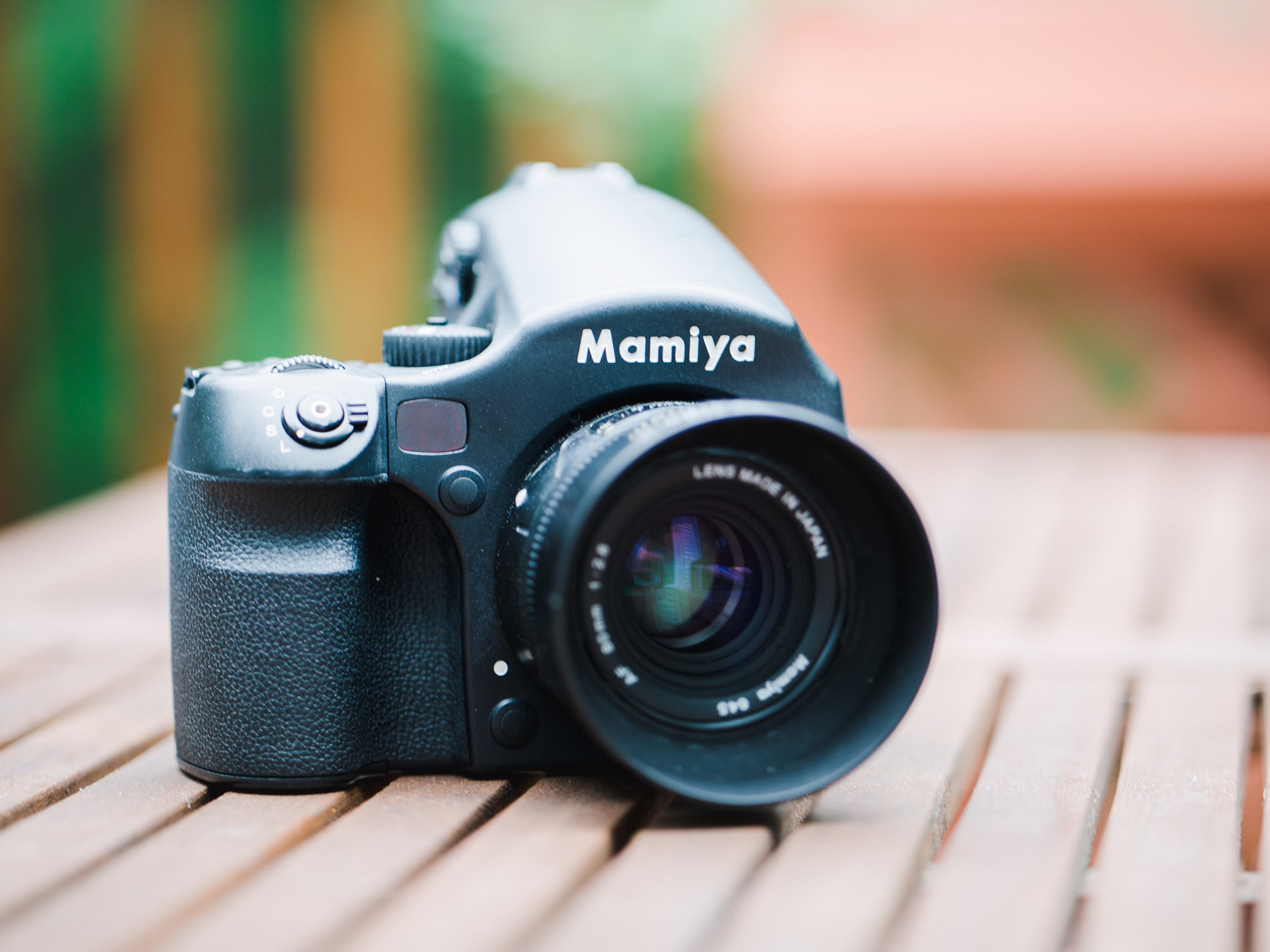
The Mamiya 645 AFD II is a medium format autofocus camera released in 2005 to succeed the 645 AFD and 645 AF cameras. It was designed to use the Mamiya 645 AF mount and is compatible with the M645 mount system. The camera allows the mounting of 120/220 film backs or several optional digital backs. This review only details the film back.
This is the first 645 body I have had a chance to use. I’ve been very curious about 645’s as I can squeeze 16 images out of a roll of 120 as opposed to the 10 I usually get with my Pentax 6×7 (or 12 with a 6×6 body). This is because the roll spools from top to bottom, exposing the image “sideways” on the film, rather than left to right like you see in most other film camera formats. I’ve admired the work of a several wedding and lifestyle photographers using 645 systems and was happy to finally give this one a go. I dropped in my favorite Fuji Pro 400H 120 and spent some time shooting in a variety of lighting conditions around several local farms.
I mainly used the Mamiya 645 AF 80mm f/2.8 lens for these tests, but also had a Mamiya 645 AF 150mm f/3.5 with the kit to try out. I did play with the lens, but all the images here are from the 80mm.
Mamiya 645 AFD II Specs
For the system I am reviewing (with the 120/220 film back only), these are the specs as stated by Mamiya in 2005.
- Type: SLR
- Shutter Speed: AE 30 seconds to 1/4000 in ? steps (½ steps in manual), X, B
- Weight: 3.8 lbs. / 1730g
- Dimensions: 7″ x 5.9″ x 3.6″ / 153 x 128 x 184mm
- Film: 120 or 220 (6×4.5, so 16 or 32 frames is it)
- Picture Size: 56mm x 41.5mm
- Lens Mount: Bayonet Mamiya 645 AF Mount
- Shutter: Electronically controlled vertical metal focal-plane shutter. (vertical
- travel)
- Mirror Lock-up: Electronic
- Multiple Exposure: Enable with multiple exposure button
- Flash Synchronization: X contact point, 1/125 seconds (when 1/3 step is selected it can be set between 1/40 and 1/125 seconds).
- Viewfinder: Fixed prism viewfinder magnification x0.71; built-in diopter adjustment (-2.5 to +0.5, optional diopter correction lenses provide adjustment ranges of -5 to -2 diopter and 0 to +3 diopter); built-in eye-piece shutter
Focusing Screen: Interchangeable, Matte (standard), Checker, and Microprism Type C for Non-AF M645 lenses.

Mamiya 645 AFD II Build and Design
This camera has a solid, yet hefty, build at just under 4 pounds without the 6 AA batteries nor a lens attached. The small 80mm f/2.8 lens adds an additional ¾ of a pound. Add that with batteries and film and you’re looking at a 4 ¾ pound camera – over a pound heavier than the comparable Contax 645 and Pentax 645 SLR’s with similar lenses and batteries. (For a super light-weight 645, there’s also the Broncia 645 rangefinder at 2.4 pounds with the 65mm lens.) It feels solid in the hand as it’s encased with durable hard plastic that can really take a beating. The eyepiece is rubber and has a diopter adjustment dial. I’ve used this camera both with and without my reading glasses and it adapts just fine.
The viewfinder is big and bright with a nice digital readout along the bottom of your current settings (focus marks, metering mode, AE lock, shutter speed, aperture, exposure comp, and flash indicator). Along the outside of the viewfinder you have your exposure mode selector and exposure compensation dials. It’s awesome that you can also swap out the focusing screen quite easily with this system. Several are available with various cropping lines as well.



For metering, the Mamiya 645 AFD II has settings for spot (S), center-weighted average (A), and auto (A-S) where the camera makes the decision for you based on the scene. At ISO 100, the meter measures between EV 2-19 and allows three steps of exposure compensation (in 1/3 steps).
The shutter release has the dial for your release modes of single (S), continuous (C), self-timer, as well as the power off (L). Focus mode is selected on body and you can choose from single (S), continuous (C), and manual (M). The Mamiya 645 AFD II uses through-the-lens phase-difference detection to autofocus.
The locking exposure mode dial offers modes of CF, X, M, Av, Tv, and P. The rest of the dials are large and in easy to find locations. (You can also set the camera to take up to five exposures before advancing.) CF is a new mode on the Mamiya 645 AFD II for setting and accessing your menu of 36 custom functions. Three sets of custom functions can be saved for quick access. (The T position from the previous Mamiya 645 AFD and Mamiya 645 AF has been removed). These function buttons allow you to do things like superimposing data (exposure mode, aperture value, shutter speed, aperture compensation value, exposure metering mode, index number, and auto-bracketing order / year, month, day, time and index number) onto the outer edge of your film. All this information is also displayed on the main body LCD, similar information to what you see on most DSLR’s LCD screens.

There are multi-function front and rear dials for adjusting shutter, aperture, bracketing and so on depending on the set exposure mode. Exposure lock, multiple exposure, and bracketing buttons are within easy thumb reach.
ISO for the Mamiya 645 AFD II is not set on the body, but on the film back. The film back has its own LCD screen to set the ISO you want to expose the image with (ISO 25-6400), as well as the film type (120 or 220). To set, you need to hold the up/down arrows together until the ISO flashes, then slowly press the up or down arrow to adjust. This film back LCD also displays the photo number you are on.
The film back has a dark slide which allows you to change backs mid-roll – and each back can have its own ISO set (as it’s the back the stores this information). This is great when you’re shooting with various stocks, like a roll of B&W and a roll of color, and you don’t have to wait to finish a roll to change up – provided you have multiple backs.
Mamiya 645 AFD II Performance
For much of the test period, I placed the Mamiya 645 AFD II in aperture priority mode with the meter set to spot and autofocus engaged, allowing the system to make the decisions for me. I carried an external meter with me to double-check the readings and this camera was always spot on. I also did a series of images in manual mode and with manual focus and off-camera metering. Aside from a couple tricky lighting situations, the brain in the Mamiya 645 AFD II does just fine.



I made sure to shoot in a variety of common outdoor light conditions to see how the camera performed and I was pleasantly surprised at how nice it performed as well as how fantastic the IQ looked. For results, sharpness, contrast and bokeh were exactly where I hoped. Though the kit was a little on the heavy side for me, it wasn’t too bad hauling around all day on my shoulder strap. It was easy enough to grip in portrait and landscape modes and was a rock star when on a tripod. I really feel this would be a solid studio kit.


Autofocus works off a single point dead center in your finder and works very well in good light. The drive motor is audible, but not annoying. Switching back and forth between near and far subjects was performed at a respectable speed. For autofocus, I highly suggest keeping it in single mode. Single is fairly quick while continuous seems to hunt quite a bit. In poor light, I also highly suggest switching to manual focus.
With the press of the shutter release, there’s a pleasing mirror slap and the film back auto-advances to the next frame. If you’re worried about shutter shake, you can also (electronically) lock up the mirror via a lever on the side of the body. In bright light, I wouldn’t worry. After 16 frames (or 32 in 220) the back will auto-rewind the roll for you.
Conclusion
The Mamiya 645AFD is wonderful medium format camera that accepts both 120 and 200 films as well as an optional digital back. You can choose from low-end to high-end backs which really makes this camera attractive. In the range of 645’s out there, it’s probably the best bang for the buck at about ½ the cost of a similar equipped Contax 645 and about the same ball park at the Pentax 645N II. The film back on the Mamiya makes it convenient to swap film stocks mid-roll and the autofocus system is quite reliable in most lighting conditions.


